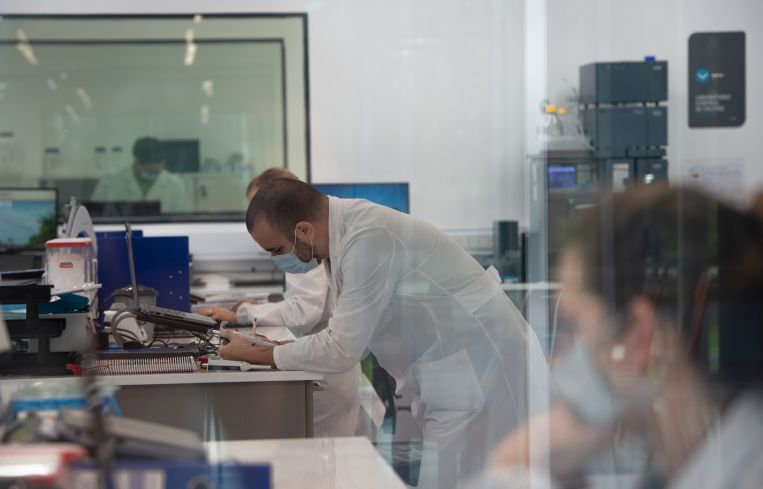Alexandria Wants to Dispel ‘Overblown’ Concerns Over Life Sciences
By Greg Cornfield October 26, 2023 3:40 pm
reprints
Alexandria Real Estate Equities argued against “overblown” concerns about the life sciences industry despite a “very challenging, and continuing disruptive macro environment,” during its third-quarter earnings call. But the real estate investment trust — one of the nation’s largest owners and developers of life sciences space — also reduced its expectations for asset sales this year while reporting higher revenues and rising occupancy.
“We are in a de facto recession and in a self-inflicted inflationary and high interest rate environment,” chairman and founder Joel Marcus said. “That is driving caution, but the life science industry is unequivocally healthy, thriving, and the key to improved health care outcomes, which are desperately needed for all of us. … We know this is a tough show-me market filled with many skeptics. Many of those skeptics doubt the health of the life science industry despite clear facts to the contrary; overblowing the impact of the elevated levels of new construction, no matter the quality, location, and/or sponsor or operations.”
As part of ARE’s ongoing $1.65 billion “value harvesting and asset recycling self-funding strategy,” the firm has unloaded $876 million this year in full and partial asset sales of properties deemed not integral to its mega-campus strategy. The firm also has another $699 million in assets sales pending for the fourth quarter, along with another $75 million in partial interest sales targeted for the fourth quarter.
ARE dropped its expectations for the asset sales plan by $100 million since the end of the second quarter, and increased its expected incremental debt for the year by $100 million. According to the firm’s earnings report, these updates are primarily due to “changes in the mix and timing of dispositions” that are expected to close in the fourth quarter.
“These sales will provide the capital needed to recycle our high-quality development redevelopment mega campus pipeline,” CEO Peter Moglia said. “Obviously, it’s a challenging interest rate environment and economic volatility has reduced overall transactional activity, but demand for our assets has remained resilient.”
Additionally, two non-laboratory properties in Greater Boston lost $90.8 million in value, the firm said. Alexandria bought the industrial and self-storage properties with an intention to replace them with a life sciences campus, but since that acquisition, “the macroeconomic environment has changed.” Now, the company is ditching that plan and expects to sell the properties in the fourth quarter.
Meanwhile, Alexandria reported $713.8 million in total revenue for the third quarter. That’s 8.2 percent more than the same period last year. Its $2.12 billion in revenue year-to-date is 10.9 percent higher than at the same point last year.
The company’s North American portfolio with more than 800 tenants has a 93.7 percent occupancy rate, up 10 basis points from the prior quarter, and the firm projects occupancy growth by the end of the year.
The weighted average remaining lease term for its top 20 tenants is 8.9 years, while the overall average is seven years. Total leasing volume for the third quarter hit 867,582 square feet, and the year-to-date leasing volume of 4.6 million square feet is in line with results from 2013 to 2020.
“We delivered 450,134 square feet and seven projects into our high barrier to entry submarkets, bringing total deliveries year-to-date to 1,290,721 square feet, covering 10 projects,” Moglia said. “Development and redevelopment leasing activity at approximately 205,000 square feet was higher quarter over quarter for the second quarter in a row, which we are pleased to see in an environment where tight financing markets have focused tenant demand on turnkey space.”
Moglia added that ARE’s pipeline of projects is 63 percent pre-leased and expected to generate $580 million of annual net operating income through the end of the third quarter of 2026. By the end of this year, ARE expects to complete the developments at 25 Binney and 15 Necco in Greater Boston and Cambridgeg, which are expected to generate $114 million of incremental annual NOI.
“We see demand holding steady today and believe it will trend upward, but are fully aware that the volatile geopolitical environment we are in can create the uncertainty that sometimes slows decision making,” Moglia said. “We’re seeing most of the requirements in the 5,000- to 30,000-square-foot range coming from either emerging-stage companies that have achieved milestones and need growth space or large requirements of 100,000 square feet or more from large pharma and biotech looking to grow or establish a footprint in our clusters.”
Alexandria reported $5.9 billion in liquidity with no debt maturities prior to 2025. Ninety-nine percent of the firm’s debt has a fixed rate. ARE has a total market capitalization of $28.3 billion and an asset base in North America of 75.1 million square feet, including 41.5 million square feet of operating properties, 5.6 million square feet of properties under construction, 8.9 million square feet of near-term and intermediate-term development and redevelopment projects, and 19.1 million square feet of future development projects.
Gregory Cornfield can be reached at gcornfield@commercialobserver.com.


